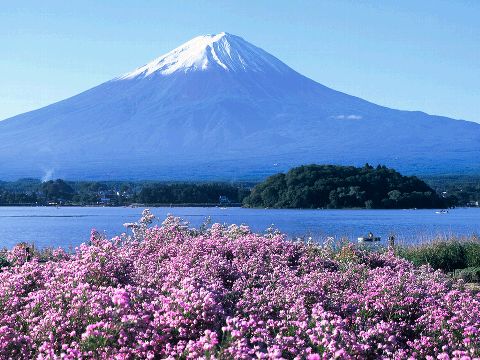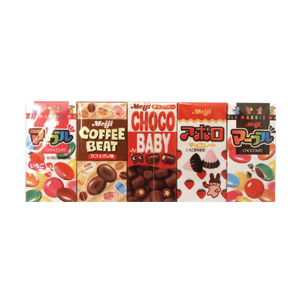
Mt. Fuji is one of the symbols of Japan and at 3,776m it is the country’s highest mountain. Although it has lain dormant since 1707, it is still classified as an active volcano. Best viewed in winter or early morning when the air is clear, Fuji-san stands alone and is always a spectacular sight. It has been the subject of countless works of art, such as the ‘Thirty-six Views of Mt. Fuji‘, a series of (woodblock prints) by Hokusai. Many tourist spots have grown up around the mountain and many of those, such as Miho no Matsubara in Shizuoka Prefecture, are famous simply because of their view of the mountain. People often predict the weather from the shape of the clouds hovering above the summit.
Fuji-san has long been regarded as sacred by some sects and climbing it started as a religious pilgrimage. The official season for climbing the mountain is July and August during which some 200,000 people make the pilgrimage, although these days mostly for fun. There is a saying that every Japanese should climb Mt. Fuji but only a fool climbs it twice. Certainly the time I ventured up the slopes the biggest problem wasn’t the steep climb but rather the rush-hour crowds of grandparents and kids determined to make progress slow for everyone. To be honest, with its surface of black volcanic sand and rock, the mountain is at its best from a distance but the view of the sunrise from the summit can make the climb worthwhile. The summit is around 20 degrees colder than the base so warm clothes are a must. There is a bus from Tokyo’s Shinjuku station to Go-gome (5th station) on the mountain (2 hours 30 minutes), from where it’s a 5km, 5-hour climb. There are several simple lodges along the way where you can get your climbing stick stamped and have a rest or a bite to eat. A 10pm start, allowing for the crowds and an occassional rest-stop, should see you at the summit in time for a memorable sunrise.

 Have you ever felt during a
Have you ever felt during a 
